Structural problems in cattle have a substantial effect on both the reproductive and growth performance of a beef herd. It is widely recognized that structural problems in sires have detrimental effects on conception rates, calving patterns and thus profitability. Similarly, females with inadequate structural characteristics are more prone to weaning lighter calves or conceiving later in the breeding season than their more functional counterparts. These structural problems are filtered through the supply chain resulting in reduced income for the producer, feedlot and thus reducing the overall productivity of the Australian Beef Industry.
The current trend for improving consistency and quality of product has shifted producers’ focus towards selecting seedstock on carcass and growth genetic traits (EBVs). Whilst, this selection has been, and will continue to be pivotal in developing the Australian beef industry, we must not forget the fundamentals of livestock breeding.
The Beef Class Structural Assessment System was designed by the MLA, the BIA and several breed societies to address structural problems in the beef industry. Detailed analysis of three thousand animals in genetically linked herds indicated that structural characteristics such as leg and foot structure were moderately to highly heritable. BEEFXCEL now services many seedstock operations in their selection and grading of stock using the Beef Class Structural Assessment System.
Te Mania Angus is continually expanding their structural assessment program in order to optimise soundness and performance in their stock. The program involves an independent assessor from BEEFXCEL analysing the structural composition of the herd on an individual basis. The program used at Te Mania Angus comprises of:
- An annual assessment of all sale bulls;
- An annual assessment of all breeding females and donor cows
- All animals deemed inadequate are culled.
Angus Structural EBVs
(Included in all Te Mania Angus sale catalogues)
The five traits analysed (and the flags associated with the EBV) are:
FA: Front Feet Angle (ST indicates steep angle, SH indicates shallow angle)
FC: Front Feet Claw Set (OD indicates open divergent claws, SC indicates scissor claws)
RA: Rear Feet Angle (ST indicates steep angle, SH indicates shallow angle)
RH: Rear Leg Hind View (BL indicates bow legged, CH indicates cow hocked)
RS: Rear Leg Side View (SR indicates straight rear legs, SI indicates sickle hocked)
Front Feet Angle (FA) and Rear Feet Angle (RA) EBVs are estimates of genetic differences between animals in desirable feet angle.
Front Feet and Rear Feet Angle EBVs are calculated from a subjective assessment of feet angle (strength of pastern, depth of heel) by an accredited assessor when animals are less than 750 days of age and are expressed in percentage units.
Higher Front Feet and Rear Feet Angle EBVs indicate an animal is expected to produce a higher percentage of progeny with desirable feet angle.
Low Front Feet and Rear Feet Angle EBVs are published with an additional flag of either “ST”, indicating increased probability of progeny with steep feet angle, or “SH”, indicating increased probability of progeny with shallow feet angle.
Front Feet Claw Set (FC) EBVs are estimates of genetic differences between animals in front feet claw set structure.
Front Feet Claw Set EBVs are calculated from a subjective assessment of front feet claw set (shape and evenness of claws) by an accredited assessor when animals are less than 750 days of age and are expressed in percentage units.
Higher Front Feet Claw Set EBVs indicate an animal is expected to produce a higher percentage of progeny with desirable front feet claw structure.
Low Front Feet Claw Set EBVs are published with an additional flag of either “OD”, indicating increased probability of progeny with open divergent claws, or “SC”, indicating increased probability of progeny with scissor claws.
Rear Leg Hind View (RH) EBVs are estimates of genetic differences between animals in rear leg structure when viewed from behind.
Rear Leg Hind View EBVs are calculated from a subjective assessment of rear leg structure when viewed from behind by an accredited assessor when animals are less than 750 days of age and are expressed in percentage units.
Higher Rear Leg Hind View EBVs indicate an animal is expected to produce a higher percentage of progeny with desirable rear leg structure.
Low Rear Leg Hind View EBVs are published with an additional flag of either “BL”, indicating increased probability of bow legged progeny, or “CH”, indicating increased probability of cow hocked progeny.
Structural (Raw) Scores
(Also included in all Te Mania Angus sale catalogues)
The Beef Class Structural Assessment System (1-9 scoring system for feet and leg structure)
- A score of 5 is ideal;
- A score of 4 or 6 shows slight variation from ideal, but this includes most sound animals.
- An animal scoring 4 or 6 would be acceptable in any breeding program;
- A score of 3 or 7 shows greater variation but would be acceptable in most commercial programs. However, seedstock producers should be vigilant and understand that this score indicates greater variation from ideal;
- A score of 2 or 8 are low scoring animals and should be looked at cautiously and inspected very closely before purchasing;
- A score of 1 or 9 should not be catalogued and are considered immediate culls.
– Jim Green, BEEFXCEL Ph 0402 003 137




